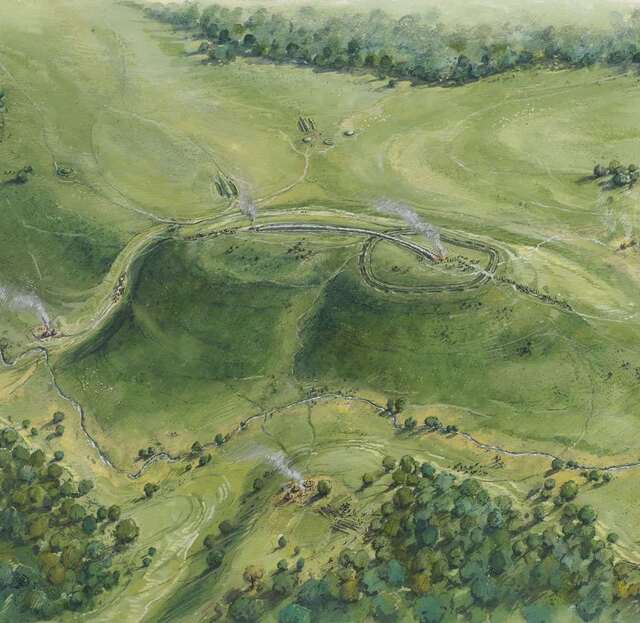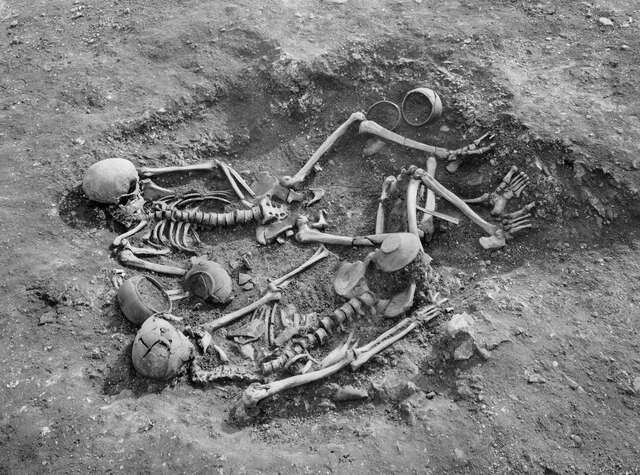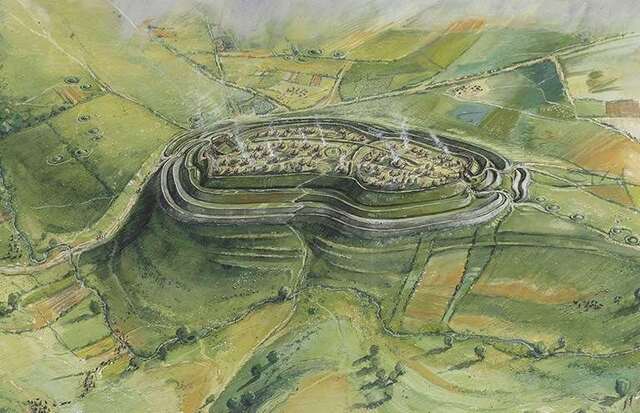Majestically perched on the hills of Dorset, England, Maiden Castle stands as Britain’s largest hill fort and one of Europe’s most impressive ancient sites. Stretching 914 meters, this Iron Age stronghold, built around 600 BC, was once a thriving settlement and defensive marvel. Now, it’s time for you to explore Maiden Castle reveals stories of resilience and remarkable engineering that continue to captivate visitors today.
The Origins and Construction of Maiden Castle
The origins of Maiden Castle can be traced back to around 600 BC, during a time when the people of Iron Age Britain relied on strongholds to protect their communities from potential threats. Positioned strategically on a large hill, the site was initially chosen for its defensive advantages, providing both visibility of approaching enemies and a natural barrier against attackers. The initial structure was modest compared to its final form but marked the beginning of what would become an extraordinary hill fort.

In approximately 450 BC, Maiden Castle underwent a major expansion, transforming it into a larger, more complex structure. This expansion reflects the growth of the community and perhaps an increased need for fortified defenses. At its peak, the fort’s defenses consisted of a series of deep ditches and steep earthwork banks, meticulously layered to create a formidable obstacle for would-be invaders. These defensive features, enhanced over time, were a testament to the architectural skill and ingenuity of the Iron Age builders who sought to secure their settlement from external threats.
Life Inside the Hill Fort
Life within Maiden Castle was a blend of community, craftsmanship, and survival. The hill fort was home to hundreds of people, each playing a vital role in maintaining the settlement’s economy and defenses. From warriors tasked with protecting the settlement to farmers growing crops on the surrounding land, Maiden Castle was a bustling community. Archaeologists have uncovered evidence suggesting that the inhabitants raised livestock and engaged in agriculture, cultivating grains that were essential for survival in the Iron Age.
Within the walls of the fort, there was likely a vibrant social structure. The Iron Age society was organized, with communal responsibilities and trade that facilitated day-to-day life. Artisans created tools, pottery, and textiles, while farmers and hunters provided food for the community. The presence of specialized roles indicates a level of social complexity that enabled Maiden Castle to thrive as a self-sustaining community.

Beyond the practical aspects of life, there was a strong sense of identity and pride within the walls of Maiden Castle. The hill fort represented not only a home but also a symbol of the community’s strength and unity. Living in such a fortified structure fostered a close-knit society where everyone depended on one another for security, sustenance, and survival.
Architectural Features and Defense Mechanisms
The architectural design of Maiden Castle reflects both functionality and an advanced understanding of defense tactics. The hill fort was surrounded by a series of ditches and ramparts that created multiple layers of protection. These earthworks, with steep slopes and deep ditches, were carefully constructed to slow down and tire out attackers, making it difficult for them to reach the inner parts of the fort.

The outermost defenses were particularly impressive, with banks and ditches strategically placed to create a maze-like barrier. In addition, the entrances to Maiden Castle were designed with sophisticated defense mechanisms in mind. Narrow, winding paths forced attackers into vulnerable positions, making them easy targets for defenders positioned above. This clever use of natural landscape and human-made barriers showcased the strategic mindset of the Iron Age builders.
Compared to other hill forts in Britain and Europe, Maiden Castle’s defenses were among the most advanced, underscoring the fort’s importance as a major settlement and defensive stronghold. The scale of these earthworks required considerable labor, coordination, and skill, highlighting the community’s commitment to safeguarding their home.
Archaeological Discoveries and Artifacts
Over the years, Maiden Castle has yielded a wealth of artifacts that provide insight into the daily lives and culture of its inhabitants. Excavations have uncovered tools, pottery, jewelry, and animal bones, each item offering a glimpse into Iron Age society. The tools suggest that the people of Maiden Castle were skilled in various crafts, while the pottery and jewelry indicate a sense of aesthetic appreciation and personal adornment.
One of the most fascinating discoveries at Maiden Castle was the presence of human remains, some of which bore evidence of violent injuries. These findings point to the likelihood of conflicts, possibly with neighboring tribes or invading forces, highlighting the defensive purpose of the fort. Other artifacts, such as remnants of grain storage and animal bones, suggest a diet that included grains, livestock, and foraged foods, indicating a well-rounded subsistence strategy.
These archaeological discoveries have helped scholars piece together the history of Maiden Castle, revealing the resilience and adaptability of its people. Each artifact tells a story, contributing to our understanding of the fort’s role as both a place of residence and a stronghold in a turbulent era.

The Decline of Maiden Castle
Despite its impressive defenses and strategic advantages, Maiden Castle eventually lost its prominence. Historians believe that the arrival of the Romans in Britain in AD 43 marked the beginning of the end for many Iron Age hill forts. The Romans introduced new military tactics and technologies that rendered traditional hill forts less effective as defensive structures.

As Roman influence spread across Britain, many hill forts, including Maiden Castle, were gradually abandoned or repurposed. The shift from tribal communities to a more centralized Roman administration altered the social and political landscape, reducing the need for hill forts. Over time, the once-thriving community at Maiden Castle diminished, and the fort was left as a relic of a bygone era.
Maiden Castle Today
Today, Maiden Castle stands as a remarkable archaeological site and a popular destination for history enthusiasts and tourists. The fort’s earthworks are still visible, providing a tangible connection to the Iron Age people who once lived there. Visitors can walk along the ancient ramparts and imagine what life must have been like for the fort’s inhabitants, surrounded by the breathtaking Dorset countryside.
Efforts to preserve Maiden Castle have been ongoing, as archaeologists and historians work to protect this important site from erosion and other environmental threats. Maiden Castle is now recognized as a Scheduled Ancient Monument, ensuring that it remains a part of Britain’s cultural heritage for future generations.
For modern visitors, Maiden Castle is more than just a hill fort; it is a symbol of human resilience and the ingenuity of our ancestors. Exploring this site offers a unique opportunity to step back in time and appreciate the skill and determination that went into creating and maintaining such an impressive stronghold.

Conclusion
Maiden Castle stands as a powerful symbol of Iron Age resilience and ingenuity. Its monumental structure reflects both a thriving community and a remarkable feat of ancient engineering. Although abandoned with the Roman conquest, its legacy endures, inviting us to remember a time of fortified hilltops and unity in the face of challenges. By preserving Maiden Castle, we honor the lives and achievements of its builders, keeping their spirit alive in our shared history
